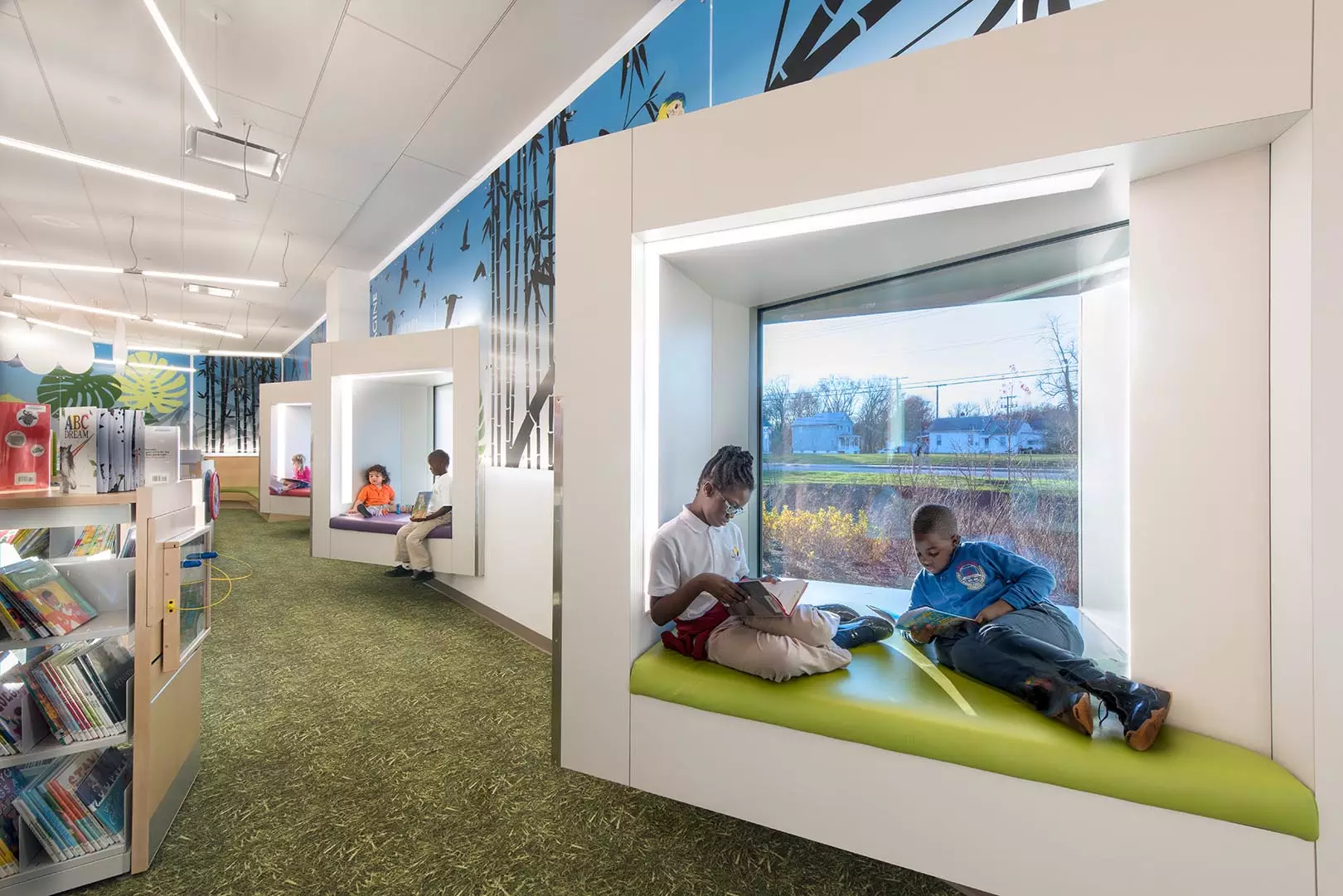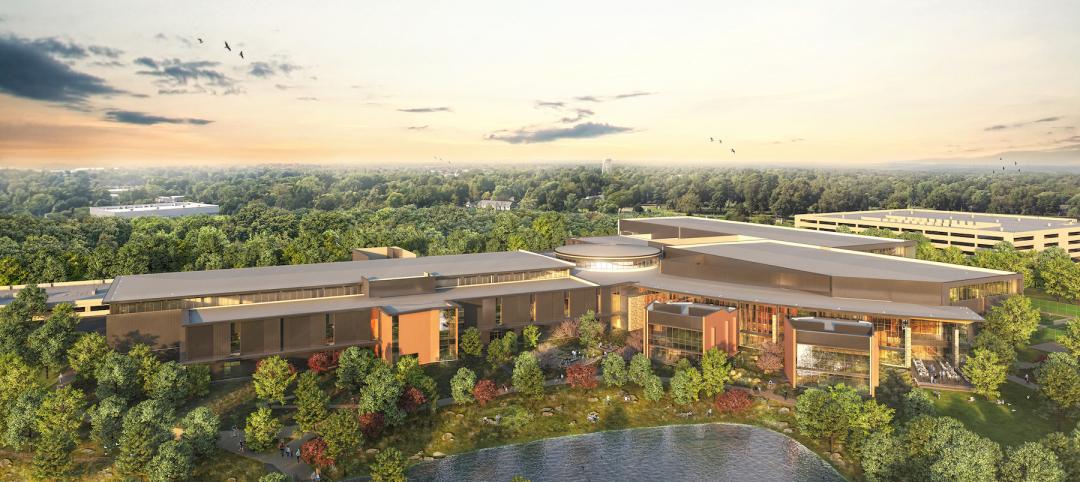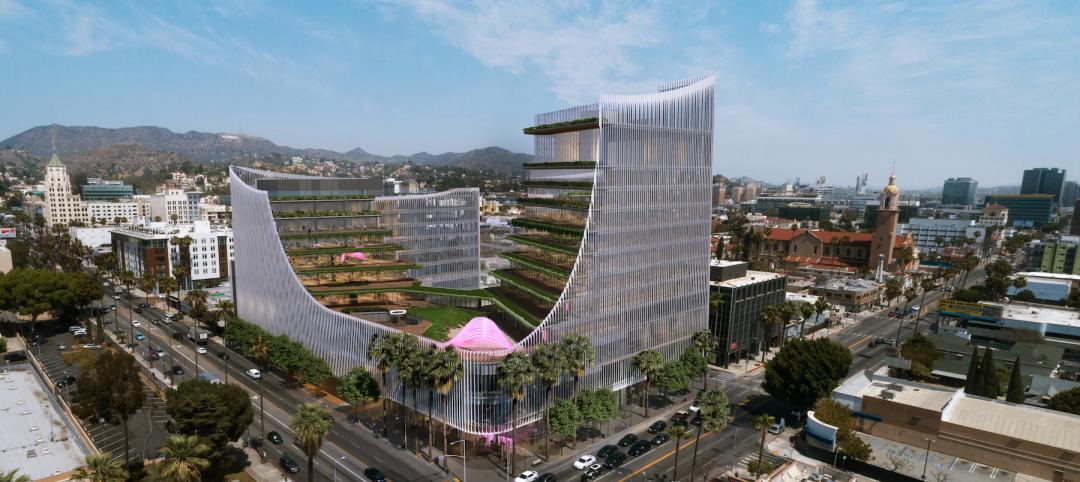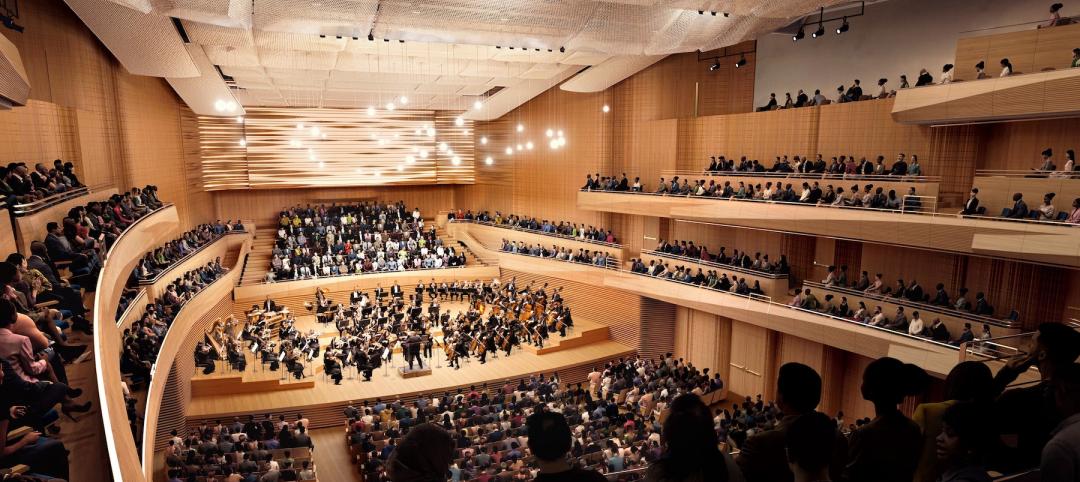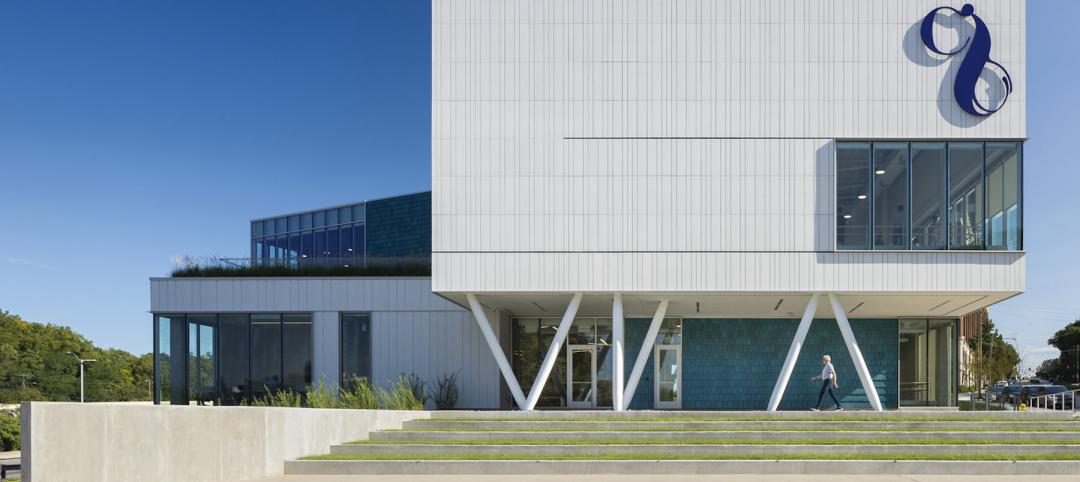The American Institute of Architects (AIA) and the American Library Association (ALA) are awarding six libraries with the 2018 AIA/ALA Library Building Awards for excellence in architectural design.
Traditional roles of libraries are evolving. Today, libraries are designed with larger gathering spaces to support the needs of the community and many include sustainable features to conserve water or energy. Both of these trends are reflected by this year’s AIA/ALA Library Building Award recipients.
Award recipient projects were selected by a six-member jury. This year’s jury included Daria Pizzetta, FAIA (Chair), H3 Hardy Collaboration Architecture, LLC; Sara A. Bushong, Bowling Green State University; Patrick Deaton, AIA, North Carolina State University Libraries; Terri M. Luke, Wake County Public Library, Cary, North Carolina; Christopher Noll, AIA, Noll & Tam Architects and Lisa Lintner Valenzuela, Johnson County Public Library, Franklin, Indiana.
The 2018 AIA/ALA Library Building Awards recipients are:
Austin Central Library; Austin, Texas | Lake Flato + Shepley Bulfinch
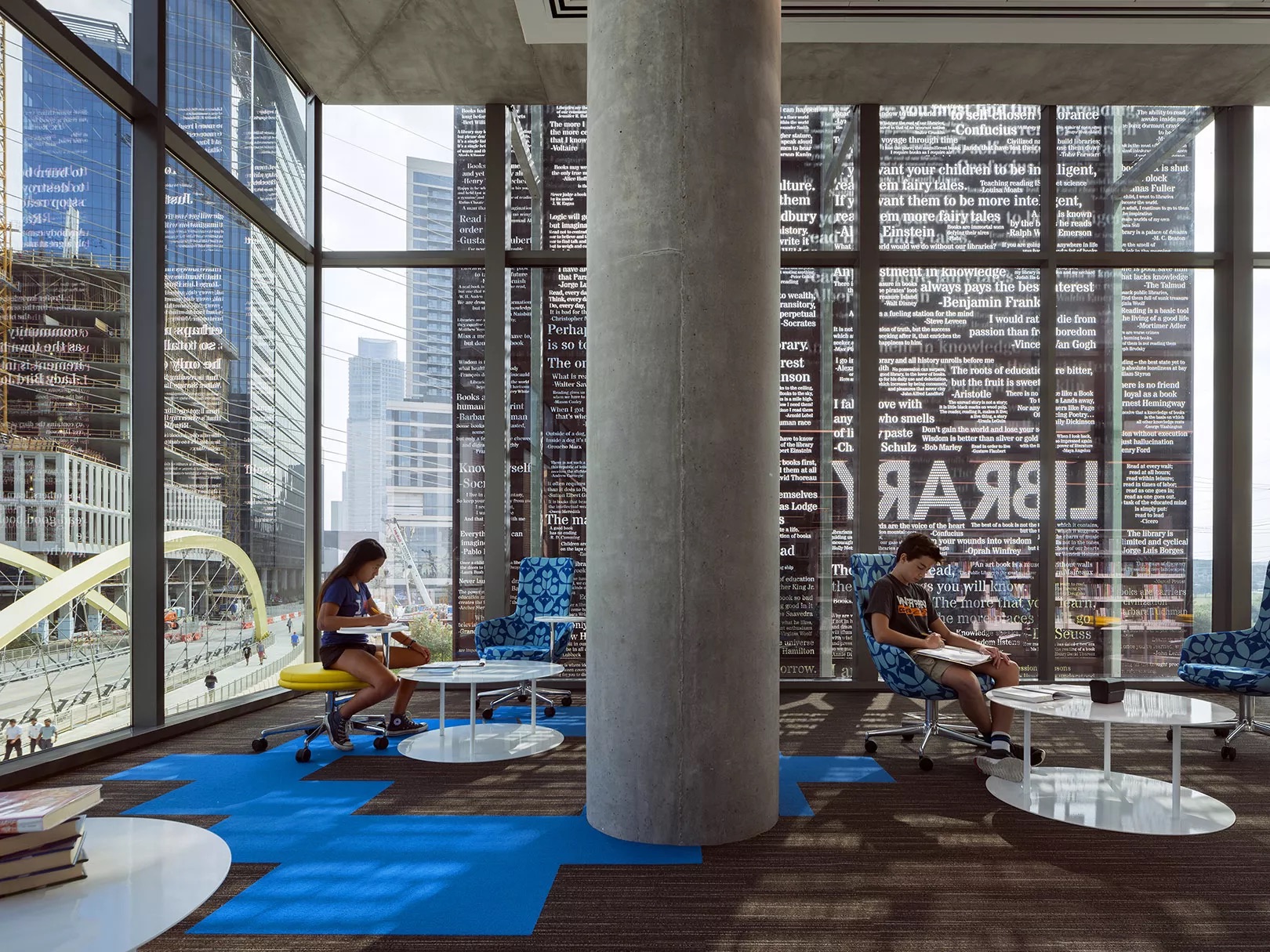
A technologically rich hub for innovation and cultural intelligence, the Austin Central Library has created a framework for lifelong learning that bolsters a more resilient community. Arguably the most daylit library in the nation, the nearly 200,000-square-foot building is defined by a light-soaked, six-story atrium surrounded by the book collections and event space. On track for LEED Platinum certification, the building respects the library system’s desire to be good stewards of water resources in an area of Texas that regularly experiences drought and is subjected to water restrictions. A 373,000-gallon cistern captures roof rainwater and HVAC condensate, which provides water in the restrooms as well as irrigation for the landscape and vegetated roof. Photo: Nic Lehoux via AIA
Eastham Public Library; Eastham, Massachusetts | Oudens Ello Architecture
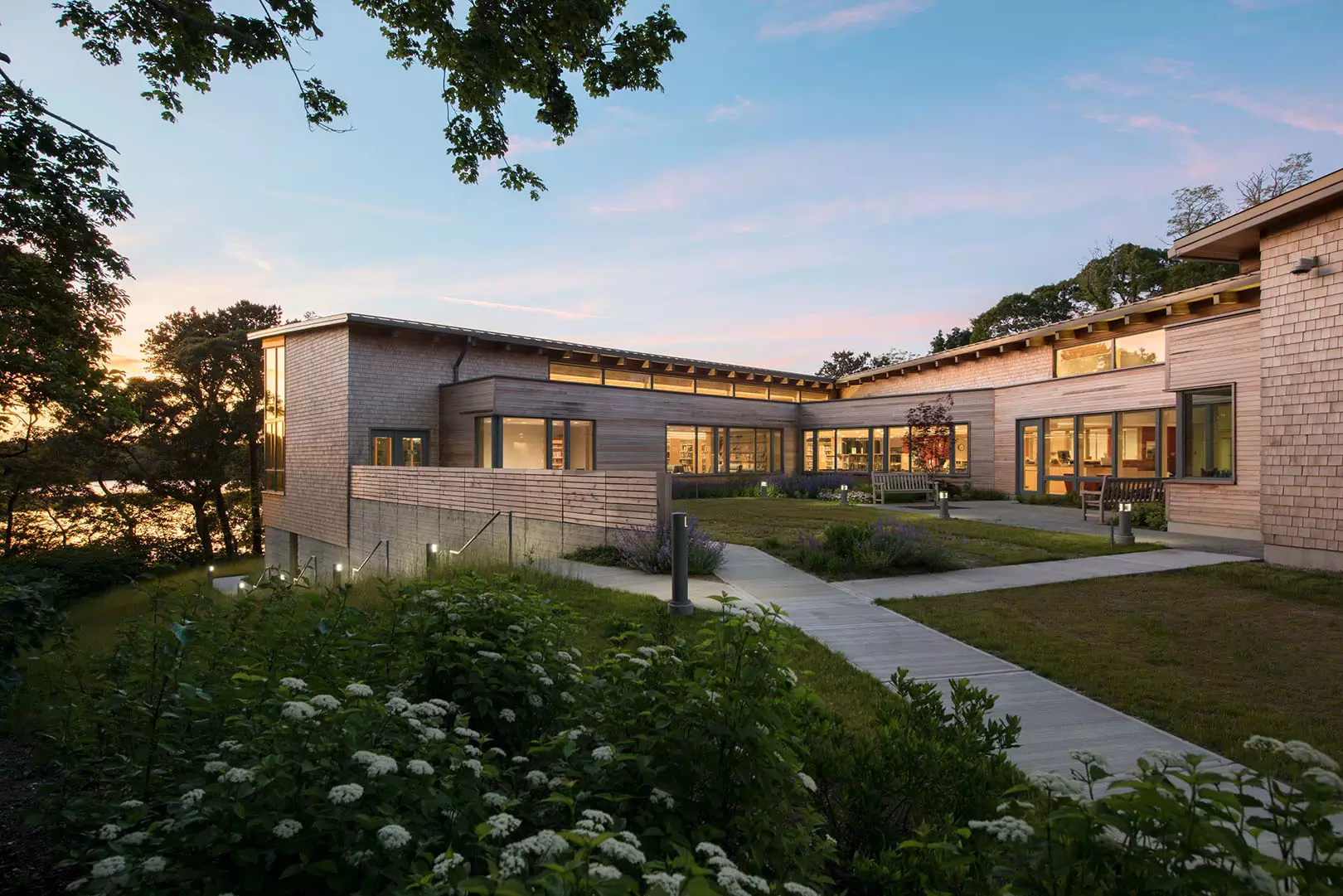
Since it opened in January 1898, the original one-room, 300-square-foot Eastham Public Library has undergone two additions as its collections and patron base grew. In order to meet the needs of today’s community, the design team replaced an outmoded 1980s addition with a sleek LEED Gold certified building that blurs the line between indoors and outdoors. The larger addition allowed for the library to double its size.
The majority of the new building mass was positioned at the rear of the site to reconcile the size of the addition to the original library, which is listed on the National Register of Historic Places. Overall, the building takes full advantage of the library’s waterfront setting while minimizing the visual impact on the small structure from the road. A palette of naturally weathering materials—cedar shingles and siding as well as bluestone flooring—relates the contemporary structure to its seaside location and vernacular of the historic building. Photo: Chuck Choi Photography via AIA
Hastings Public Library Renovation/Addition; Hastings, Nebraska | The Clark Enersen Partners
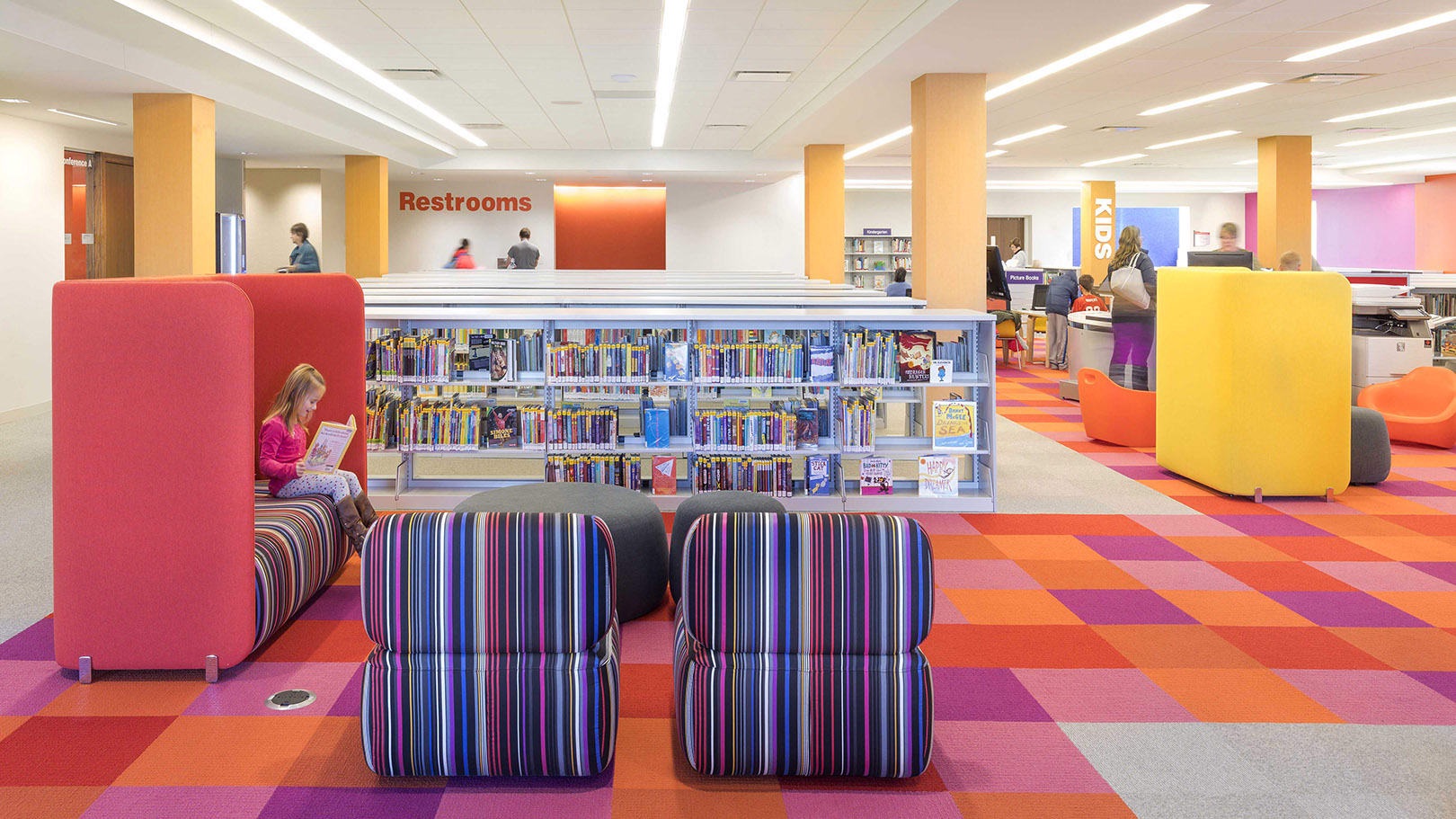
The renovation updates the existing 29,000-square-foot library, while adding 2,500 square feet of additional space. The floor plan was reconfigured to help the library meet 21st century standards for technology and programming, improve energy efficiency, and meet all life safety requirements. The lower level was remodeled to accommodate 2,900 square feet of flexible makerspace, as well as space for the archive collection. A new open stair has been included to promote visual and physical connectivity between first and second floors.
The relocation of the main entrance from the north side of the building to the southwest corner eliminates the need for steps, improves thermal performance, and provides a dynamic new face for the library. In addition, the project provides new, larger, and more dynamic areas for children and young adults; a new 150-person sub-dividable community room with a warming kitchen; and an outdoor patio adjacent to the popular library area. Photo: Paul Brokering via AIA
Laurel Branch Library; Largo, Maryland | Grimm + Parker Architects
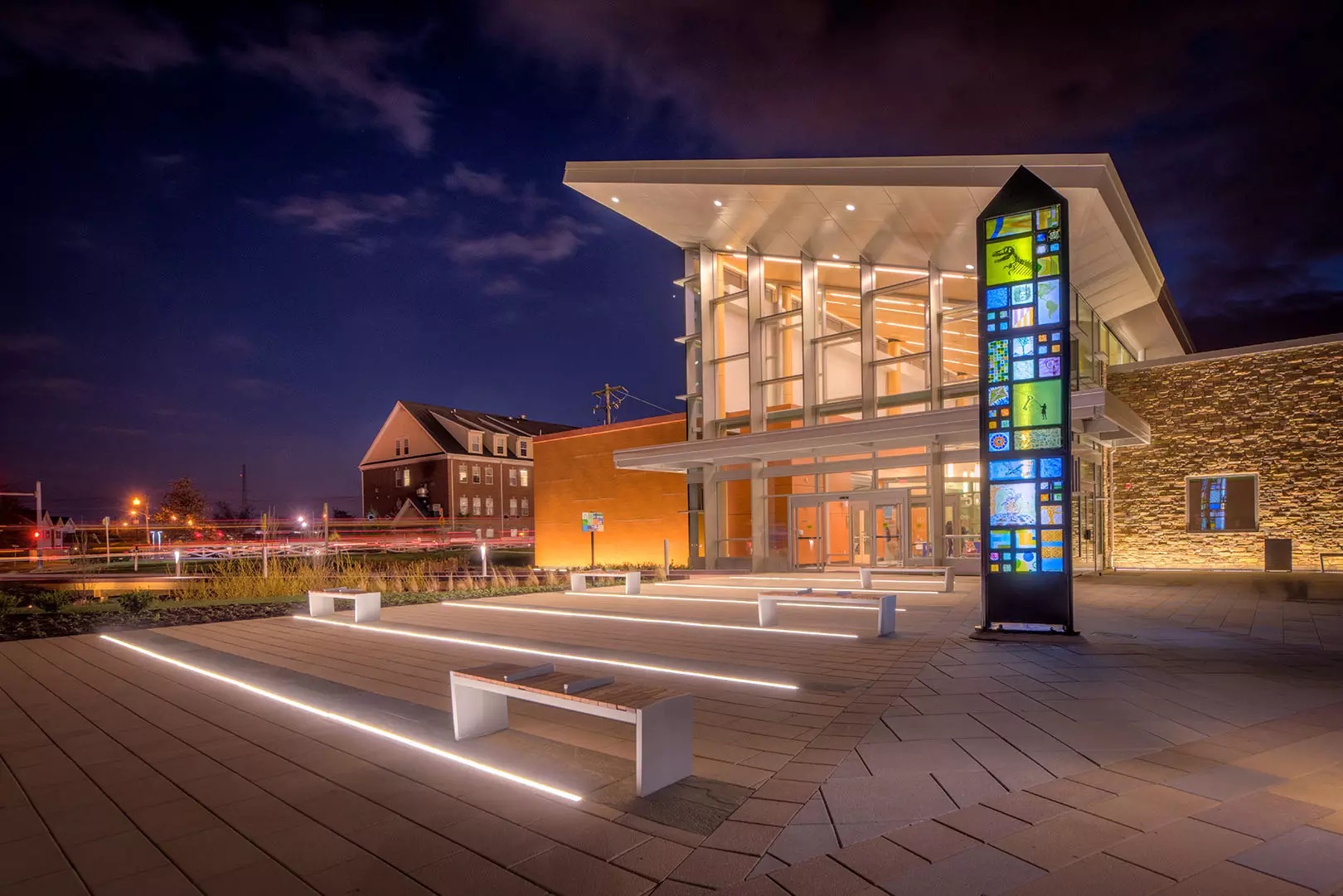
The 32,000-square-foot library replaces an existing facility, which was one of Prince George’s County’s most heavily used libraries. Its architecture provides a pedestrian-friendly solution that solidifies the library’s institutional presence while improving and respecting the park. The interior was designed to enhance the user experience through a replica paleontological dig site in the floor of the children’s area and public art pieces by local artists in other spaces. While not pursuing LEED certification, the LEED-NC v3 system provided an overarching design framework for its sustainable features. Outside, the site is a living laboratory for stormwater management and local ecosystems. Native drought-resistant plants were planted in large sweeps on the park and library grounds for maximum visual and functional impact. Flowering cherry trees echo nearby Washington, D.C., and a stand of native oaks reference the history of the site, once known as Oak Grove. Photo: Sam Kittner via AIA
Pico Branch Library; Santa Monica, California | Koning Eizenberg Architecture, Inc.
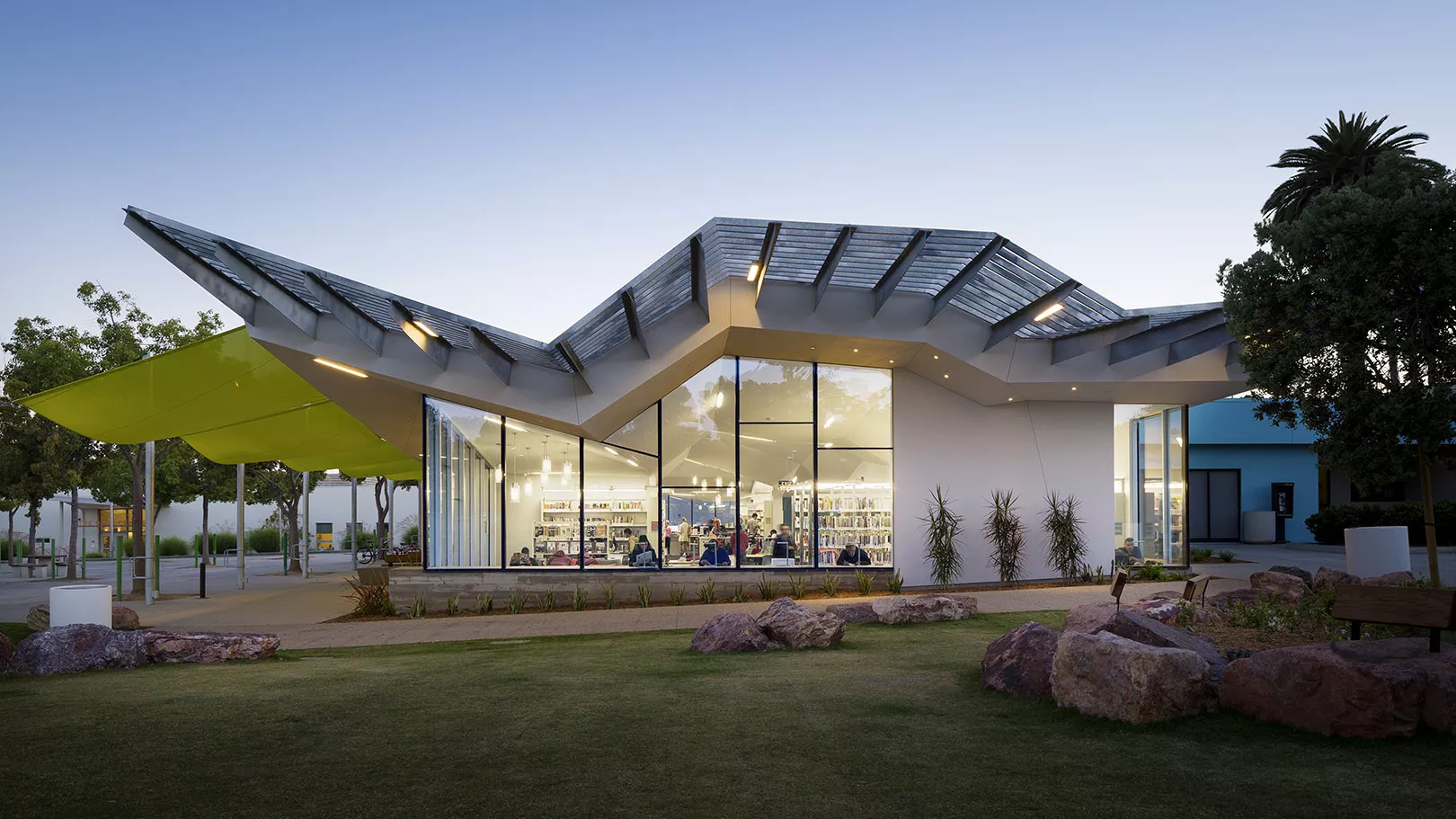
The library, located in the heart of Santa Monica’s Virginia Avenue Park, leverages its setting to encourage its use as both an educational resource and social gathering spot.
The nearly 9,000-sf library preserves the site’s existing green space and takes advantage of previously underused space to further activate the park’s event plaza. Sustainable features can be found throughout the LEED Platinum certified library, chief among them daylight harvesting and passive shading. Skylights and the library’s carved ceiling help maximize light and define the building’s architectural identity. Deep overhangs and canopies protect glass from direct sun and eliminate the need for interior shades.
Through its rainwater harvesting system, the library collects water from its roof and the roof of an adjacent building for storage in a 12,000-gallon cistern, where it is filtered and used to flush the library’s toilets. In the first six months of operation, the library increased its membership by more than 1,200 people and over 100,000 materials were checked out. Photo: Eric Staudenmaier via AIA
Tulsa City-County Central Library; Tulsa, Oklahoma | MSR Design
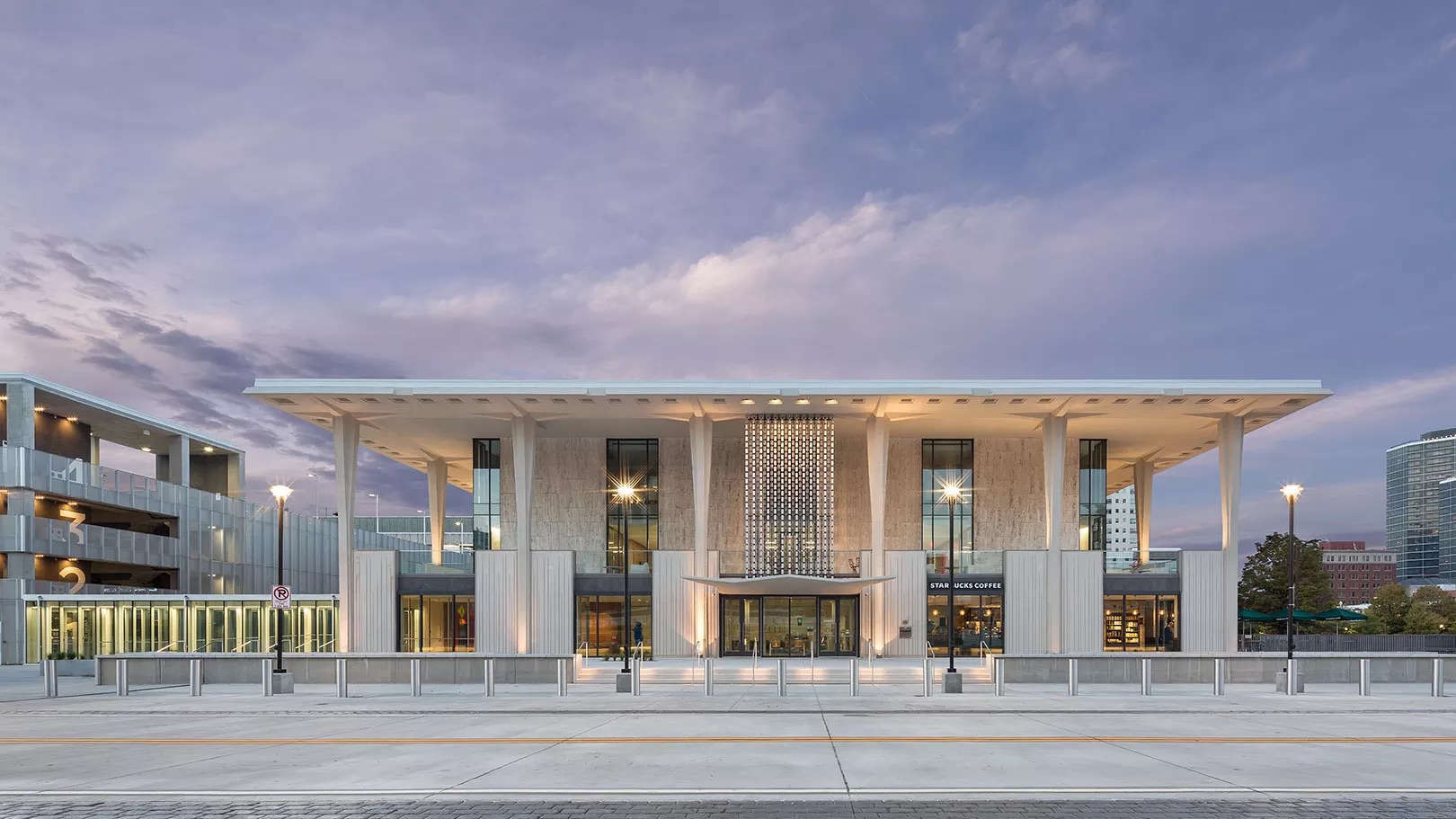
The design team approached the project with the goals of delivering a solution that responds to the needs of a 21st-century library while creating a destination that actively contributes to the city’s renewal. To that end, the project activates the exterior spaces, simplifies patron entry, and dramatically increases parking availability through a parking garage with an enclosed link to the library. Despite the addition of the 88,000-square-foot garage, the overall impervious surfaces on the site were reduced, alleviating stormwater runoff.
New cast stone panels, refurbished public art, and a thorough cleaning honor the library’s original 1965 design. Beyond the adult stacks and destination children’s area inside, the library features a mix of spaces where up to 140 people can meet and collaborate. The plaza itself, once tired and deserted, now features pervious pavers and ample seating surrounded by vegetation. Coupled with the library’s café, outdoor spaces provide seating for more than 400 people, providing regular meeting space before library hours begin. Photo: Lara Swimmer via AIA
Related Stories
Giants 400 | Aug 20, 2022
Top 180 Architecture Firms for 2022
Gensler, Perkins and Will, HKS, and Perkins Eastman top the rankings of the nation's largest architecture firms for nonresidential and multifamily buildings work, as reported in Building Design+Construction's 2022 Giants 400 Report.
Giants 400 | Aug 19, 2022
2022 Giants 400 Report: Tracking the nation's largest architecture, engineering, and construction firms
Now 46 years running, Building Design+Construction's 2022 Giants 400 Report rankings the largest architecture, engineering, and construction firms in the U.S. This year a record 519 AEC firms participated in BD+C's Giants 400 report. The final report includes more than 130 rankings across 25 building sectors and specialty categories.
Cultural Facilities | Aug 5, 2022
A time and a place: Telling American stories through architecture
As the United States enters the year 2026, it will commence celebrating a cycle of Sestercentennials, or 250th anniversaries, of historic and cultural events across the land.
Museums | Jun 28, 2022
The California Science Center breaks grounds on its Air and Space Center
The California Science Center—a hands-on science center in Los Angeles—recently broke ground on its Samuel Oschin Air and Space Center.
Headquarters | Jun 21, 2022
Walmart combines fitness and wellness in associates’ center that’s part of its new Home Office plan
Duda | Paine’s design leads visitors on a “journey.”
Cultural Facilities | Jun 15, 2022
Gehry-designed Children’s Institute aims to foster community outreach in L.A.’s Watts neighborhood
The Children’s Institute (CII) in Los Angeles will open a 200,000-sf campus designed by Frank Gehry this summer.
Cultural Facilities | Jun 10, 2022
After 10 Years, Taiwan’s new Taipei Music Center Reaches the Finish Line
RUR Architecture has finished the Taipei Music Center (TMC), turning a 22-acre (9-hectare) site into a new urban arts district.
Projects | Mar 24, 2022
A Hollywood home for creatives
A Hollywood development will serve as a collaborative center for artists, students, and those in the entertainment industry.
Cultural Facilities | Mar 10, 2022
A ‘reimagined’ David Geffen Hall in New York is on track to open this fall
Its half-billion-dollar reconstruction is positioning this performance space as an integral key to luring people to the city again.
Performing Arts Centers | Mar 8, 2022
Cincinnati Ballet’s new center embodies the idea that dance is for everyone
Cincinnati Ballet had become a victim of its own success, according to company president and CEO Scott Altman. “We were bursting at the seams in our old building. We had simply outgrown the facility,” Altman told the Cincinnati Enquirer.


